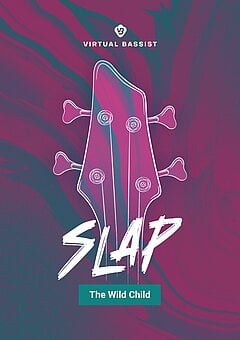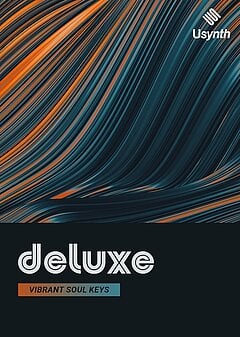The Ultimate Guide to Nu Disco
How to bring bouncy rhythms, funky bass lines, rich chords and a pumping beat to your EDM tracks.
APRIL 23RD, 2022
Read until the end of this ultimate guide tutorial to learn more about using bass plug-ins in emerging genres like Nu Disco:
Beat and rhythm
For the most part, it’s hard to go wrong with a simple 4-to-the-floor rhythm (kicks on every beat doubled with snares on beats 2 and 4). Add some closed hi hats on the “and” of each beat, throwing in an open high hat here and there, and you’re good to go! In terms of drum processing, nu disco has more in common with electro than with traditional disco or funk — so you’ll want to make the kick and snare big. This often means a strong low and high end on the kick while scooping out the middle frequencies a bit, plus a healthy amount of saturation and compression on the snare to get a meaty snap.
For the production side, your drum kit will typically work best when it’s very dry — zero or minimal reverb on the snare, hi hats, and of course, the kick. One of the well-known secrets to make something “funky” (which is essential for nu disco) is to shorten your note releases to almost nothing. This is part of the reason muted guitar and clavinet are used in a lot of traditional funk; not just for their sharp attacks, but because of their non-existent releases! You can apply this quite well to snares in particular — shaping the tail, choosing the right moment to chop it and making every hit consistent will take you a long way!
Also, if you’ve been producing EDM for any length of time, you’re likely familiar with sidechain compression (if you’re not, iZotope published an excellent article on the topic here). Many nu disco tracks make extensive use of it, often cutting out the entire rest of the mix in a pulsating beat relative to the 4-to-the-floor kick. This helps the entire track to feel more alive, and once you get the routing sorted in your DAW it’s very easy to use. Don’t be shy about dipping the level of the mix every time the kick hits — of course, that means you want to be working with a strong sample (Beatmaker KANDY can help you there)!
Chords
Much like funk, palm-muted guitar (especially if you add in a tasty wah effect) forms the chord backbone of many nu disco songs. This allows you to fill out the mix quickly, as funk does dual duty: chords and harmony, plus rhythm from those fast, sweeping chunks. Traditionally it’s been difficult to achieve this without a live guitarist, but Virtual Guitarist SPARKLE makes it easy to get an authentic performance that fits the bill every time.
From here, start layering in “filler” synths with some nice low pass filter movement to make the synth parts feel more alive. The low pass filter is key, as the high frequencies should get their sparkle from the hi hats, guitars and vocals (if you decide not to add vocals, this admittedly becomes a little less important). This is the place to add extra reverb if you’re so inclined, as opposed to the guitar and drums which must be kept tight in nu disco!
Another nice addition is electric piano, either doubling the backing synths or using rolled chords here and there to make things feel more irregular and natural (Usynth Deluxe is the perfect VST for this). Add a bit of delay and light reverb, paying attention to the overall frequency balance — electric piano can be very midrange heavy, so you may need to make EQ cuts to maintain balance between keys, synths, and the rest of the arrangement.
Bass
To really dial up the funk, focus heavily on the bass. This will be trickier to write than most EDM bass lines, as your understanding of chords and melody will come into play far more. A simple trick you can use extensively is to alternate octaves every eighth note when you’re not switching chords; this gives a funky pulse that adds a ton of movement without you having to break out the theory book.
To break down bass line possibilities in detail would fill several articles, but you don’t need to write them from scratch. UJAM’s Virtual Bassist SLAP gives you tons of different phrases to use right out of the box! You can play with major, minor, bluesy options and plenty more, but the real power lies in the feature common to all of our Virtual Bassists: MIDI Drag & Drop, and the ability to start with any phrase and tweak it to your liking. No need to start with a blank slate, but with a few small changes you can create bass lines that are uniquely yours.
There’s another fun thing you can do with bass: while drum fills are common in heavier subgenres of EDM, nu disco offers a great opportunity for a twist: adding in bass fills! Normally, creating them requires either a using samples or being a bass player yourself, but with SLAP, you can choose one of the Style Phrases and let it rip — if you want more control, simply drag the MIDI from SLAP’s UI into your DAW and play with the individual notes as you see fit.
Wrapping up
Nu disco is a ton of fun to produce, and it’s very forgiving if you decide to go a little over the top with your use of funk riffs and aggressive percussion. Dial in the kick and snare first to create the pulse of the song, add in hi hats and any additional percussion that makes sense, lay down a few chords, and go to town on the bass. It needn’t be much more complicated than that — with nu disco, you only need a few well-placed pieces to make an awesome track come to life.
Most importantly, don’t be afraid to heavily emphasize the most important parts — harder hitting drums, more percussive action in the guitar, bouncier and rounder bass, etc. You can safely push all of these elements harder than you normally might, and nearly everything has an opportunity to be more dynamic in the mix. Have fun with it and make some nu disco!
About the Author
Harry Lodes is a copywriter, marketing consultant and content writer for audio and ecommerce brands. He lives in the Philadelphia area, releasing Eastern/Western hybrid EDM under the artist name KAIRI hearkening back to his roots in Berklee College of Music.
Stay up to date
Sign up and we’ll send you an e-mail with product news and helpful stuff every now and then. You may unsubscribe at any time.
Defy Limits
We develop software solutions that enable people to create, consume and interact with music.



